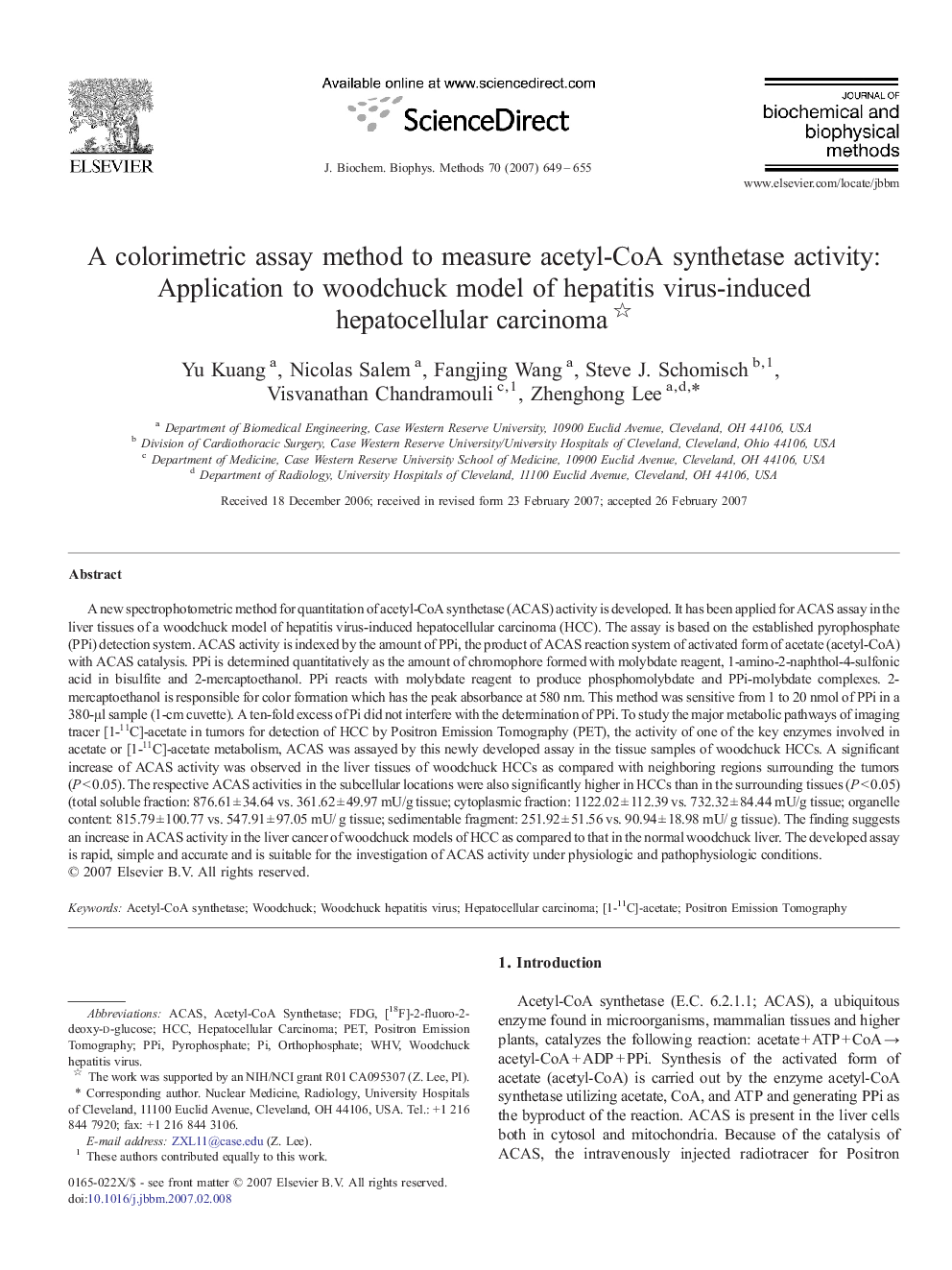| Article ID | Journal | Published Year | Pages | File Type |
|---|---|---|---|---|
| 1988543 | Journal of Biochemical and Biophysical Methods | 2007 | 7 Pages |
A new spectrophotometric method for quantitation of acetyl-CoA synthetase (ACAS) activity is developed. It has been applied for ACAS assay in the liver tissues of a woodchuck model of hepatitis virus-induced hepatocellular carcinoma (HCC). The assay is based on the established pyrophosphate (PPi) detection system. ACAS activity is indexed by the amount of PPi, the product of ACAS reaction system of activated form of acetate (acetyl-CoA) with ACAS catalysis. PPi is determined quantitatively as the amount of chromophore formed with molybdate reagent, 1-amino-2-naphthol-4-sulfonic acid in bisulfite and 2-mercaptoethanol. PPi reacts with molybdate reagent to produce phosphomolybdate and PPi-molybdate complexes. 2-mercaptoethanol is responsible for color formation which has the peak absorbance at 580 nm. This method was sensitive from 1 to 20 nmol of PPi in a 380-μl sample (1-cm cuvette). A ten-fold excess of Pi did not interfere with the determination of PPi. To study the major metabolic pathways of imaging tracer [1-11C]-acetate in tumors for detection of HCC by Positron Emission Tomography (PET), the activity of one of the key enzymes involved in acetate or [1-11C]-acetate metabolism, ACAS was assayed by this newly developed assay in the tissue samples of woodchuck HCCs. A significant increase of ACAS activity was observed in the liver tissues of woodchuck HCCs as compared with neighboring regions surrounding the tumors (P < 0.05). The respective ACAS activities in the subcellular locations were also significantly higher in HCCs than in the surrounding tissues (P < 0.05) (total soluble fraction: 876.61 ± 34.64 vs. 361.62 ± 49.97 mU/g tissue; cytoplasmic fraction: 1122.02 ± 112.39 vs. 732.32 ± 84.44 mU/g tissue; organelle content: 815.79 ± 100.77 vs. 547.91 ± 97.05 mU/ g tissue; sedimentable fragment: 251.92 ± 51.56 vs. 90.94 ± 18.98 mU/ g tissue). The finding suggests an increase in ACAS activity in the liver cancer of woodchuck models of HCC as compared to that in the normal woodchuck liver. The developed assay is rapid, simple and accurate and is suitable for the investigation of ACAS activity under physiologic and pathophysiologic conditions.
